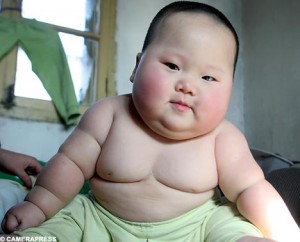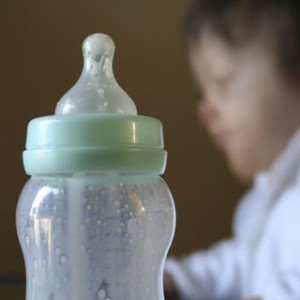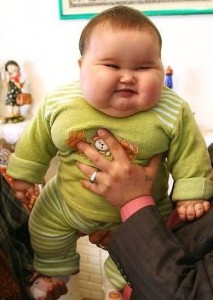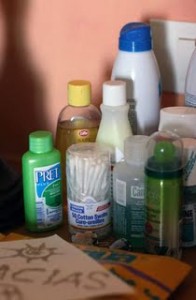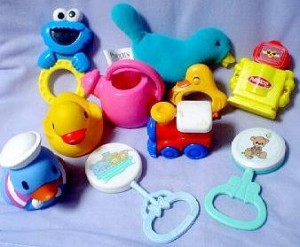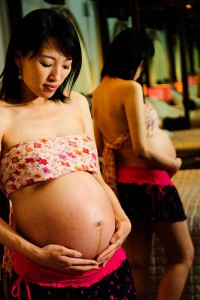
If you are pregnant, you are probably being careful about the foods you eat. But how about your deodorant, shampoo, hair gel or face creme? Your skin absorbs chemicals through your pores, and those which affect your hormones, and those of your baby, known as endocrine disruptors, can be potent at parts per billion or even parts per trillion. Your exposure is higher than that.
You should avoid a number of products or types of products. First, look at anything with “fragrance” as an ingredient, or at anything that foams, or at anything that might extract the plastic from the bottles. In 2002, three-quarters of the 72 products tested by the Environmental Working Group contained phthalates, plasticizing chemicals linked to birth defects, obesity, feminizing infant boys, liver and kidney damage, infertility and premature breast development in both boys and girls. These include both brand name cosmetics like L’Oreal, Dove, Cover Girl and Revlon and some “natural” brands .
In a recent study, 145 preschoolers whose mother’s prenatal urine was high in two common phthalates, their sons are less likely to play with male-typical toys and games, such as trucks and play fighting. Girls, OTOH are more likely to become more aggressive with prenatal and postnatal exposure to BPA which can leach from hard plastics, especially #7. We know that the reproduction of other species is compromised by these chemicals, so the results on people are potentially profound.
One thing that has affected all of us, from the developing embryo to the adult is a category of chemicals named obesogens by researcher Bruce Blumberg of the University of California, Irvine. These chemicals mimic hormones and upset the body’s homeostasis and disrupt the endocrine system in a way that increases appetites and stores fats. There is evidence that they also affect developing fetuses. Levels have been increasing since the 1950s.
Be suspicious of products marketed as “natural,” “organic,” “dermatologist-tested,” or “hypoallergenic.” The FDA doesn’t have standards for those claims and doesn’t require companies to substantiate them. Even “fragrance-free” doesn’t always mean that it is: the product may contain dangerous ingredients that mask odors.
Here are specifics of what to avoid and why.
- Heavy Fragrances frequently contain phthlates as carriers but are usually hidden under the name ‘Fragrances”, “Perfume” or “Parfum”. That name also covers byproducts like formaldehyde. If you smell it, either there are either volatile chemicals being released or a cloud of particulates. Either way will get chemicals into your bloodstream. Better to go without fragrance, but if you want some, dilute a few drops of a safe essential oil in an ounce jojoba oil. Be sparing though as essential oils are much stronger than found in nature and will show up in the liver. A spritz of organic rosewater or another hydrosol is best.
- Hair Care products contain a variety of chemicals including sodium laureth sulfate, PEG,plasticizers that cause foaming or creaminess, nanoparticles which add reflectivity and shine, phthalates and parabens. Hairspray is full of chemicals that enter through breathing them and causes penis malformations in the baby. Hair dyes include lead, p-phenylenediamine; toluene-2; 5-diamine; p-aminophenol. Henna often contains heavy metals accumulated by the plant or added after. During pregnancy you should go natural or just use the lemon juice in the sun routine. Wash with pure castile soap and rinse with vinegar or lemon juice.
- Tattoos and black henna temporary tatts should be avoided during and a few months before pregnancy. Most reputable tattoo artists won’t work on pregnant women and it is illegal in many states. Aside from concerns about hepatitis or blood borne diseases, the ink may contain chemicals which cause activity for several months. There isn’t enough known about effects that the ink, which is partly absorbed into the body, may have on the baby. Further, the electric needles may cause miscarriage by conducting electrical current into the body. Some hospitals have policies prohibiting epidurals through tattoos. If you want an epidural and have a tattoo on your back, it still would be best to contact the hospital about its policies. Black henna contains para-phenylendiamine (PPD) which can cause neurological problems for the baby: use neutral henna and not too much.
- Sunscreens and tanners commonly contain avobenzone, benzphenone, ethoxycinnamate, PABA that are known free radical generators and are believed to damage DNA or lead to cancers. Thy often contain phthalates and nanoparticles. The spray-on tanners are especially bad because you can inhale the ingredients, getting them into your bloodstream faster. Those include the suspected mutagen Dihydroxyacetone (DHA). If you want a tan, go out in the sun between 11:00 and 1:00 with a little sesame oil to get your Vitamin D which will help your baby, reduce the chance of toxemia in pregnancy and build up for your breastmilk, then cover up after 20 minutes. Your pregnancy glow should make up for the rest.
- Antibacterial Soaps and waterless cleaners often contain triclosan with chemical structure similar to Agent Orange. The EPA registers it as a pesticide and it is a carcinogen. New research also shows that triclosan in tap water can react with residual chlorine from water disinfection to form myriad chlorinated byproducts, including chloroform, a human carcinogen. Ordinary soap and water cleans hands better than antibacterial soap and doesn’t kill off the good bacteria that protect you and your baby. You can make a waterless handcleaner out of aloe vera gel and essential oils to carry with you. For disinfectant, use soap and water or a drinkable alcohol like vodka.
- Acne products may contain benzol peroxide, beta hydroxyl acid, salicylic acid or alpha hydroxy acid, which are not safe. Prescription acne medications cause deformity and you usually need to sign that you are using a reliable form of birth control like the pill. Fully 25-35% of babies born to mothers using Accutane in the first trimester have some pattern of birth defects. Retin-A can be expected to be similar to Accutane due to its molecular structure. Tetracycline is an antibiotic given for acne which inhibits bone development and causes gray teeth in the baby. Pregnancy is likely to clear up your acne without these, but it isn’t worth putting your baby at risk. Use the loofa facial discs with Basis soap and water or soaked in rosewater or witch hazel for exfoliation.
- Nail polish contains a variety of noxious chemicals including dibutyl phthalate, formaldehyde, toluene, tosylamide formaldehyde resin (sometimes causes eyelid rashes when people scratch their face). The women who work in nail salons where they breathe in fumes all day, are more likely to suffer from miscarriages, stillbirths, birth defects, and developmental issues as well as respiratory diseases, so protecting yourself helps them. Although no studies have been published on birth defects among nail workers, a North Carolina study found an increased risk of spontaneous abortion among nail salon employees. Instead, buff your nails or have them buffed in a well-ventilated salon and get your salon to only stock safer polishes.
- Eye makeup often contains parabens (methylparaben, ethylparaben, propylparaben, butylparaben); nickel; cobalt; chromate especially in nanoparticle form. Probably more irritating to you than your baby.
- Chemical hair removers contain thioglycolic acid which is untested but smells so bad that you wouldn’t want to use it while pregnant. Shave instead, using soap as a lubricant.
- Phthalates are not only found in fragrances, but in all kinds of products. The same phthalates that cause permanent harm of the male reproductive system in laboratory studies are also found in nail polish, hair spray, deodorant, and fragrances – well known products like Revlon, Calvin Klein, Christian Dior, and Procter & Gamble. The laboratory found phthalates in Pantene Pro V “Healthy Hold” and Aqua Net hair sprays, Arrid and Degree deodorants, and fragrances like Poison by Christian Dior and Coty’s Healing Garden Pure Joy Body Treatment, to name just a few. It is also found in plastic bottles and may leach into cosmetics in that way. Hairsprays, spray body mists and powders are easily inhaled. Although found in 100% of the bloodstreams in pregnant women in a recent Maine test, the FDA has declined to ban it.
- Parabens (Methyl, Butyl, Ethyl, Propyl) are also ubiquitous, used as preservatives. They are found in deodorants and antiperspirants, hair care products, lotions and facial serums. They have been found in breast cancer tumors and are suspected carcinogens. Parabens, as xenoestrogens (chemicals which fit into estrogen receptors), may contribute to sterility in males. Estrogen-like activity causes hormone imbalance in females and early puberty.
- Phenoxyethanol is a preservative found even in organic cosmetics, although it is restricted in Japan and banned in Europe. It can also cause reproductive defects and nervous system damage. In cosmetics, concentrations are typically less than 1 percent, but may be cumulative and could affect a developing fetus.
- Propylene Glycol (PG) and Butylene Glycol: Petroleum plastics act as surfactants (wetting agents, solvents). EPA considers PG so toxic it requires protective gloves, clothing, goggles and disposal by burying. Because PG penetrates skin so quickly, EPA warns against skin contact to prevent brain, liver, and kidney abnormalities. There is NO warning label on products where concentration is greater than in most industrial applications.
- Nanoparticles, very tiny particles that can get into your blood stream through your skin are found in sunscreen, bronzers, hair gels, eyeshadow and mineral makeup. They are new and untested. In the way that fine grinding of flour lead to increases in heart disease and sensitization to gluten, the effects of nanoparticles may be profound and pregnant women should avoid them. Especially avoid them in forms that sit on your skin or are sprayed into the air.
- Dioxins are unlisted ingredients related to Agent Orange and can come from the breakdown of chlorophenols like triclosan,emulsifiers, PEGs and ethoxylated cleansers like Sodium Laureth Sulfate. Pesticide. And responsible for antibiotic-resistant bacteria.
- Sodium Lauryl Sulfate (SLS) and Sodium Laureth Sulfate (SLES): Detergents and surfactants that pose serious health threats. Used in 90 percent of personal-care products that foam. Animals exposed to SLS experienced eye damage, depression, labored breathing, diarrhea, severe skin irritation–even death. SLS may also damage skin’s immune system by causing layers to separate, inflame and age.
- DEA (Diethanolamine), MEA (Monoethanolamine), & TEA (Triethanolamine): are foam boosters which irritate skin and eyes and cause contact dermatitis. These compounds are easily absorbed through skin to accumulate in body organs, even passing the blood brain barrier. Repeated use resulted in major increases of liver and kidney cancer.
- Quaternium-15 is a formaldehyde-releasing preservative.
- Cocamidopropyl betaine is found in some bath preparations.
- 1,4 dioxane, which is not technically an ingredient, but a byproduct of the carcinogen ethylene oxide. Ethylene oxide is used in a process called ethoxylation, which is used to make harsh ingredients milder.
You do not need to be totally without self care products. Castile soap, Dr. Bronner’s or an organic shampoo bar can take care of cleaning your skin and hair. Witch hazel, rosewater or hydrosols of sandalwood make good toners. Buttermilk makes a great masque. Organic mayonnaise makes a luxurious face masque or hair conditioner. Vinegar rinses, perhaps infused with a sprig of fresh rosemary work as conditioners for normal to oily hair. There are also product lines like Garden of Eve’s Expectantly Lovely line which are designed to be safe to mother and baby. And many organic lines are also safe, but do check the ingredients.
See Also:
Vitamin D Reduces Pre-Eclampsia in Pregnancy
How to Get Vitamin D from the Sun
Nursing Mothers, Infants and Vitamin D
Chemicals and Obesity: What if it Isn’t Your Fault? Obesity and Endocrine Disruptors
How to Make Waterless Handcleaner
Sources:
- Wikipedia Endocrine disruptors, Plasticizer
- Ester John et. al. Spontaneous Abortion Among Cosmetologists
- Stacy Malkin Not Just a Pretty Face: The Ugly Side of the Beauty Industry
- Environmental Working Group. Not Too Pretty: Cosmetics and the FDA
- Endocrine Disruptors in the Workplace, Hair Spray, Folate Supplementation, and Risk of Hypospadias: Case–Control Study
- Don’t let your cosmetics cause health problems (seattletimes.nwsource.com)
- Acne Treatments During Pregnancy
- ScienceBlog Daily Pilot study relates phthalate exposure to less masculine play by boys
- BISPHENOL A Plastic exposure in pregnancy linked to aggressive girls: study
- Jana Ballinger “The Toxic 12” Beauty Ingredients
- Christine Lepisto 10 beauty ingredients that you must ditch during pregnancy
- Muddle, S. Tattoo or not to do? J Obstet Anesth. 2006 Jul;15(3):259-60. PMID: 1679846
- Kuczkowski KM. Labor analgesia for the parturient with lumbar tattoos: what does an obstetrician need to know? IArch Gynecol Obstet. 2006 Aug;274(5):310-2. Epub 2006 Feb 21.


![Reblog this post [with Zemanta]](http://img.zemanta.com/reblog_b.png?x-id=8e524200-1aaa-4739-94eb-e5a2fab0844d)

